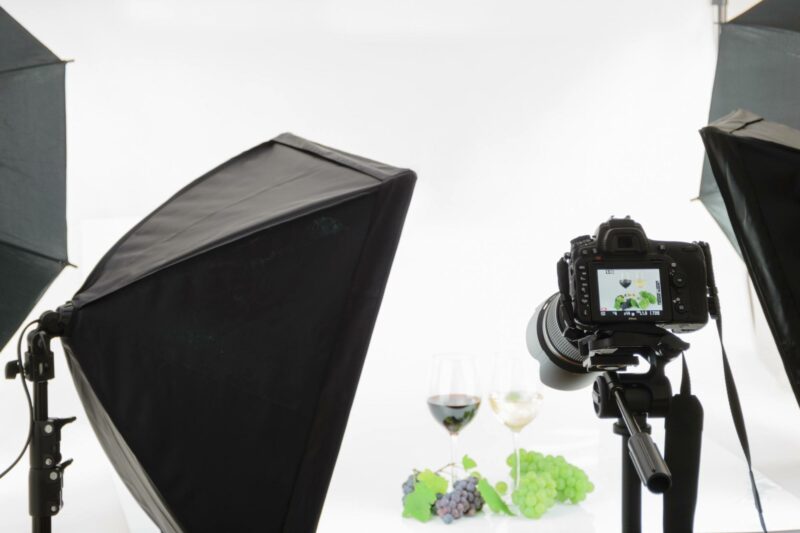Full frame is one of the biggest buzzwords that you can hear in photography circles these days. These full-frame digital cameras are making headlines on the photography landscape.
A full-frame DSLR is a great choice for any serious photographer. It can give you the best photos, making it the single best investment you need.
If you’re going into full-frame photography, you need to understand the many benefits this can give you.
In this guide, we will give you everything you need to know about shooting in full-frame:
What is Full-Frame?
Before we try to understand its benefits, we need to understand first what is full frame. To define, full-frame photography is the use of a full sensor that is equal to a 35mm film. The 36 x 24 mm equivalent is the largest consumer format without moving to the special medium format.
You can find full-frame sensors in many of Canon and Nikon’s high-end cameras. Many of the new lines of mirrorless cameras are also taking advantage.
As DSLR’s use interchangeable lenses between them, so they cater towards:
- full-time professional photographers
- serious amateur photographers
Most of their prices start around $2000 and even more.
If you jumped from a crop sensor camera, you’ll notice a few major differences. These will give you many technical advantages when it comes to your photography. It can enhance your output and give some improvements in many aspects of the way you take images.
1. Full Frame Cameras Have Larger Pixels
Let’s start with the basics. Because full-frame cameras have a larger sensor when you compared it to crop sensor, it also has more power. It has a larger pixel density for every megapixel rating.
A pixel, to the uninitiated, is the tiny area of illumination on a screen or a digital image. Larger pixel sizes help the camera get better, crisper color information.
A bigger pixel also captures light with better total efficiency and less noise. This makes it a great option for low light environments.
If you compare full frame vs APS-C, the bigger pixels work in your favor. A full-frame camera also performs much better in higher ISO settings. It allows you to capture a higher dynamic range and stronger color variation.
All of these technical details point towards one thing. It creates a more accurate, more realistic, and more vibrant final image.
2. Full Frame Camera Works Better in Low Light
As we noted, a full-frame Canon and Nikon have a larger sensor compared to other DSLR cameras. This translates to a better performance in low light as it captures more ambient light. Because of this, you can use a full-frame in night photography, opening up to more possibilities.
Low light happens during some time after sunset when things are still visible but too dark to catch. This can also happen during indoor photography and even in overcast weather.
Low light photography is a challenge to many shutterbugs due to its complexity. You’re doing a careful balance between the noise from high ISO and blurs from low shutter speeds. With a full frame’s bigger sensor, you get better focus in darker environments.
As a full-frame camera also works better in high ISO settings, so you get less noise. You can then go for much higher shutter speed, working better without a tripod at a moment’s notice.
However, there are other brands that offer the same benefits. The Sony A7 II and the Pentax K-1 are also great options.
3. Full Frame Cameras Have Higher Dynamic Range
Every DSLR has a type of dynamic range. We noted that a full-frame has a superior dynamic range because of its larger pixels. When you compare a full-frame vs APS-C camera, you will notice the difference in dynamic range performance.
What is dynamic range and why would you want this advantage from a full-frame camera?
The difference between the darkest shadows in your image when you contrast it with your best details is your dynamic range. A camera with a wider dynamic range can capture a fuller range of details. This gives you more defined shadows, better mid-tones, and highlights.
If you’re taking landscape photography, this helps record more details in shadows and mid-tones. While sensor pixels are not the end-all, be-all of dynamic range. It plays a big part in it, however.
4. Full Frame Gives You Better Depth of Field Control
Full frame cameras need longer focal-length lenses to handle the full 24 x 36 mm format at any coverage. If you compare full frame vs APS-C, you will notice the difference in normal lenses. The full-frame uses 50mm lenses as normal, while APS-C uses the 35mm as standard.
This shallower depth of field gives the photographer a better DOF control at any aperture. This shallow DOF is obvious once you go at f/2.8 and wider, which makes more pleasing studio shots. If you’re doing a pictorial, you would love the portraits full-frame cameras create, making them larger than life.
Better depth of field control gives you the ability to separate your subject better from its background. Every subject, even if you compare it to a similar photo with the same framing, gets sharp rendering. It makes them pop off a softer looking background.
This also gives you less of a need for expensive, wide aperture lenses. Even then, you can still use wide apertures for better isolation.
Take Advantage of the Benefits of Full Frame Photography
When it comes to full-frame photography, the advantages are obvious. Superior depth of field control, better high ISO outputs, and stronger performance in low light conditions are some of the benefits of using full-frame cameras. If you’re jumping to full-frame from a crop sensor camera, you will notice the remarkable difference.
If you’re looking to learn more about full-frame camera systems, you need someone who can help. You need an expert who can teach you about all the joys of full-frame photos.
Don’t hesitate to check out our other guides today, like this one revealing why you shouldn’t ignore Pentax


